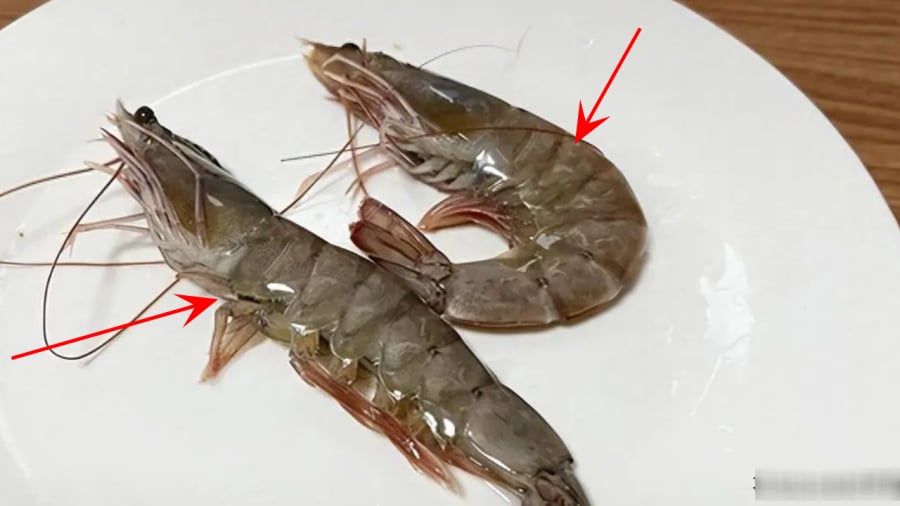Shrimp is a highly nutritious food that can be prepared in a myriad of delicious ways. Various breeds, sizes, and flavors of shrimp are available in the market, but the most important factor when purchasing shrimp is freshness.
Which is better, curved or straight shrimp?
When buying shrimp, pay attention to their shape. Opt for shrimp with a curved body. This indicates freshness. Shrimp naturally curl up when exposed to sudden temperature changes, so freshly frozen shrimp will have a slightly curved form.
On the other hand, straight-bodied shrimp are those that were frozen after they had died. These shrimp have lower nutritional value, inferior meat quality, and a less appealing flavor.
Therefore, when purchasing shrimp, always choose the ones with a curved body.

Other considerations when buying shrimp
- Color of the shrimp
Examine the shrimp’s color carefully. Fresh shrimp have a natural shell color that varies depending on the breed. The shell should be shiny and translucent. Avoid shrimp with dark, dull shells, as this indicates that they are no longer fresh and may have deteriorated.
- Head firmly attached to the body
This is an important indicator of freshness. Shrimp whose heads are loosely connected to their bodies, or are almost detached, have been stored for a long time and are no longer fresh. Their reduced quality may also pose health risks.
- Meat elasticity test
Try pulling a shrimp straight. If it returns to its original curved shape quickly, it is still fresh. Additionally, fresh shrimp meat feels firm and bounces back when pressed gently.
- Tails that are not flared
Fresh shrimp usually have their tails neatly tucked in. On the other hand, shrimp that have been injected with water or chemicals to increase their weight will have flared tails.
Different types of shrimp will have slight variations in shape and color. For example, fresh tiger shrimp will have bright shells and bodies. Small pink shrimp should be white with a hint of pink; if they are darker, they are not fresh. Brown shrimp look similar to tiger shrimp but have thinner shells. Their shells are white with pink hues and green eyes. Rock lobster shrimp have bright, shiny shells, and their antennae are green. Since lobster shrimp are more expensive, choose the freshest, most active ones to ensure quality and avoid wasting money.
How to store shrimp
Fresh shrimp should be prepared as soon as possible after purchase to prevent bacterial growth and deterioration.
The simplest way to store shrimp is to clean them, let them air dry, and then cut off their long whiskers. If you have time, you can also remove the waste bag from the head, devein them, and then place them in a container with a tight-fitting lid in the freezer.
Another popular method for storing shrimp involves using sugar. After cleaning and drying the shrimp, place them in a container and sprinkle a small amount of sugar on top. Close the lid and gently shake the container to coat the shrimp with the sugar. Be careful not to use too much sugar, as it will alter the taste of the shrimp. Store the container in the freezer. The sugar will prevent the shrimp from sticking together, making it easier to thaw them. It will also prevent the heads from turning black due to the low temperature.
When storing shrimp, divide them into portions sufficient for a single meal. This way, when it’s time to cook, you can thaw just the amount you need, ensuring the rest remain fresh and unaffected by temperature changes.
We hope that this guide helps you select the freshest shrimp for your family meals.









